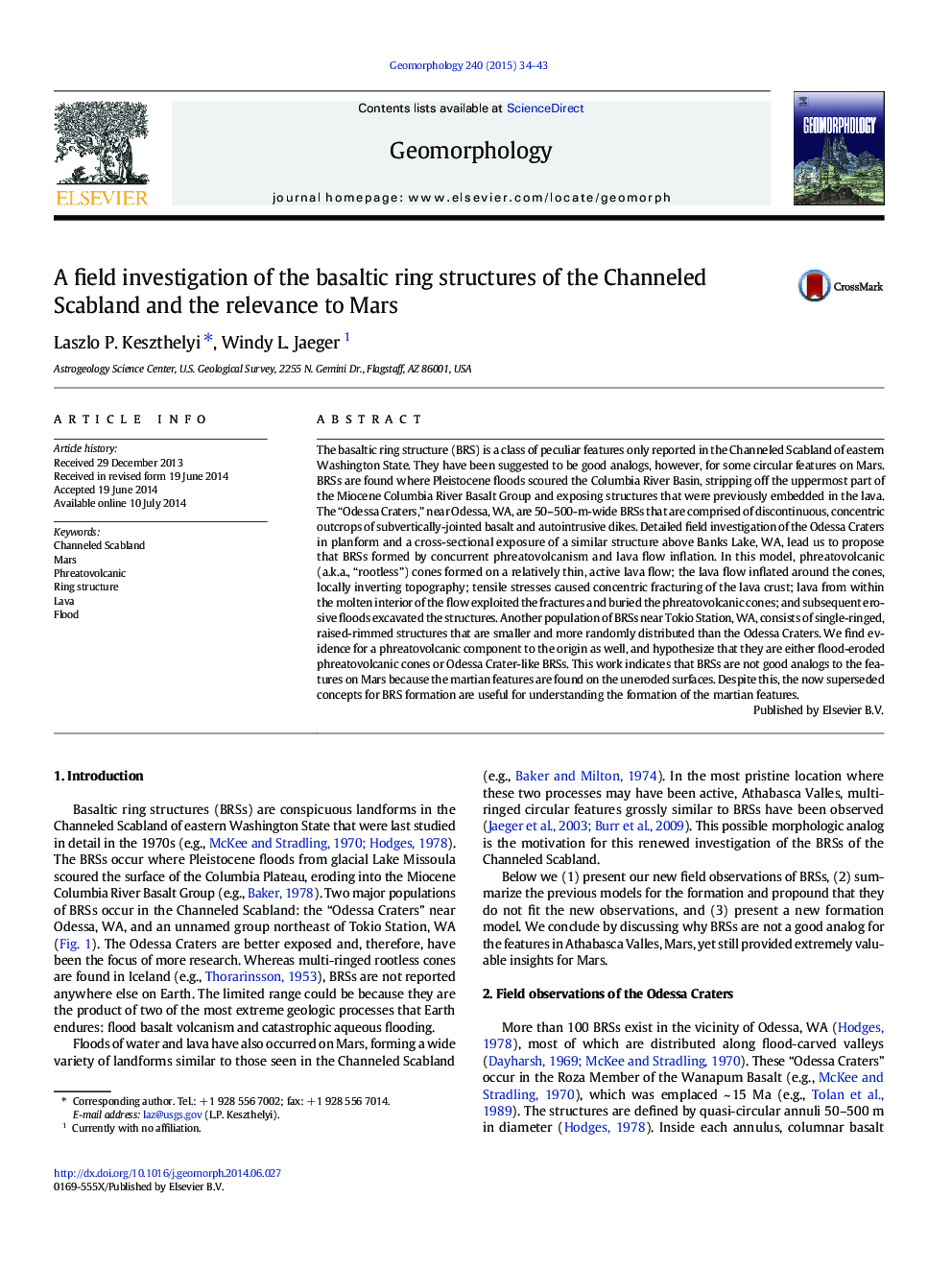| کد مقاله | کد نشریه | سال انتشار | مقاله انگلیسی | نسخه تمام متن |
|---|---|---|---|---|
| 6431878 | 1635409 | 2015 | 10 صفحه PDF | دانلود رایگان |

- Basaltic ring structures formed as lava inflated around phreatovolcanic cones.
- Basaltic ring structures are not analogs for features in Athabasca Valles, Mars.
- Now superseded models for the formation of basaltic ring structures apply to Mars.
The basaltic ring structure (BRS) is a class of peculiar features only reported in the Channeled Scabland of eastern Washington State. They have been suggested to be good analogs, however, for some circular features on Mars. BRSs are found where Pleistocene floods scoured the Columbia River Basin, stripping off the uppermost part of the Miocene Columbia River Basalt Group and exposing structures that were previously embedded in the lava. The “Odessa Craters,” near Odessa, WA, are 50-500-m-wide BRSs that are comprised of discontinuous, concentric outcrops of subvertically-jointed basalt and autointrusive dikes. Detailed field investigation of the Odessa Craters in planform and a cross-sectional exposure of a similar structure above Banks Lake, WA, lead us to propose that BRSs formed by concurrent phreatovolcanism and lava flow inflation. In this model, phreatovolcanic (a.k.a., “rootless”) cones formed on a relatively thin, active lava flow; the lava flow inflated around the cones, locally inverting topography; tensile stresses caused concentric fracturing of the lava crust; lava from within the molten interior of the flow exploited the fractures and buried the phreatovolcanic cones; and subsequent erosive floods excavated the structures. Another population of BRSs near Tokio Station, WA, consists of single-ringed, raised-rimmed structures that are smaller and more randomly distributed than the Odessa Craters. We find evidence for a phreatovolcanic component to the origin as well, and hypothesize that they are either flood-eroded phreatovolcanic cones or Odessa Crater-like BRSs. This work indicates that BRSs are not good analogs to the features on Mars because the martian features are found on the uneroded surfaces. Despite this, the now superseded concepts for BRS formation are useful for understanding the formation of the martian features.
Journal: Geomorphology - Volume 240, 1 July 2015, Pages 34-43